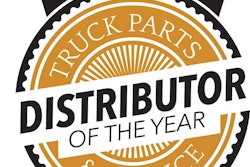It started nearly a decade ago. Brick-and-mortar retailers began struggling with “showrooming,” which is when a consumer goes to a store to examine merchandise before purchasing the items online.
For example, a consumer is in the market for the latest, greatest TV, so he would walk into an electronics big box retailer and inspect the various models and even pepper the sales associate with myriad questions to learn about features and which models are best. That consumer would then walk right out the door, go home, get on his computer and order it at a cheaper price from an online retailer.
The above scenario is no different than one of your customers walking into your store to bend your ear about a certain part or what parts are needed to solve his particular problem only to leave and order parts from, say, Amazon or RockAuto.
Furthermore, a growing number of independent aftermarket parts providers are developing or enhancing their online presence, offering more information about the parts they offer and enabling customers to order parts online — all in the name of improving customer service. While this omnichannel approach to the business provides conveniences to customers, it also makes it easier for them to comparison shop online.
Whether consumers are gathering information in-person or online, it’s still “showrooming” because they’re collecting data and purchasing elsewhere. Are the aftermarket’s strengths enough to overcome it?
The best weapon the independent aftermarket has against these online interlopers always has been product knowledge, long-standing relationships with customers and easy returns. Speed of service has been an advantage, too, but for how long? If the part isn’t on the shelf and has to be ordered, parts providers have the resources available to get it in one or two days, which typically is faster than online retailers. However, some industry folks will tell you those large online retailers will be getting better at expediting shipping.
Whether consumers are gathering information in-person or online, it’s still “showrooming” because they’re collecting data and purchasing elsewhere. Are the aftermarket’s strengths enough to overcome it? Several industry experts weighed in on the issue last month at Service Opportunity Learning Days (SOLD), held as part of Heavy Duty Aftermarket Week.
“I was at an Ace Hardware and this guy was at the counter with a [sales associate] who literally walked the customer through the job he wanted to do at his house. Then I saw the guy leave out the front door. I thought to myself, ‘How does he expect the store, with all this expertise, to be here three years from now just to save 5 or 10 percent? That’s what I think about,” said Brett Penzkofer, vice president of aftermarket sales, Meritor.
“It’s uncomfortable to not be protectionist about the information but I think you have to figure out the value proposition thinking through the eyes of Google. That’s scary because … we’re afraid of losing value by making those changes, but that is something we’re going to have to work through,” he added.
David McCleave, Hendrickson director of marketing and aftermarket, said the company spends a lot of resources producing technical training videos for its Hendrickson Academy, but the videos don’t guarantee those who watch them will buy from the company.
“That is something we talk about. We’re going to put the information out there; you have to. But how do we get the hook and handle back in that says, ‘Now that we just taught you this information, buy our parts.’ We have to figure out what that hook and what those handles are,” McCleave said.
Ultimately, companies need to make the information available, said Tim Spurlock, president, American Diesel Training Centers. “If you’re not making those videos and you’re not making that data available, your competitors will.”
So, there’s the rub. The aftermarket community knows it needs to make product and service information easily accessible to customers while, at the same time, developing strategies to ensure they remain customers.










